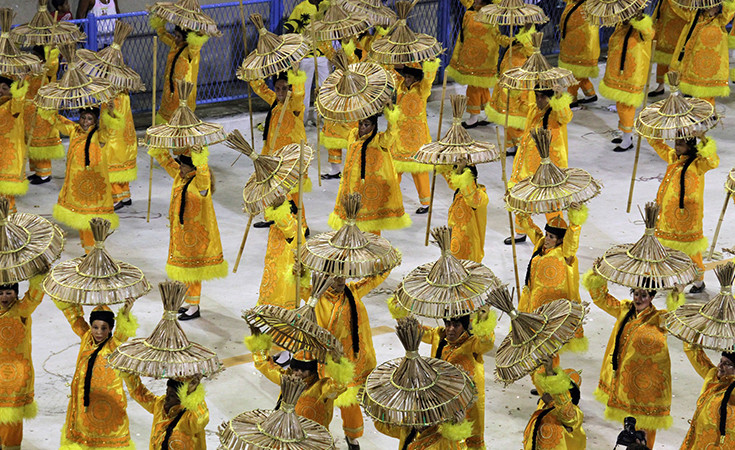
Samba is not just one type of dance. Samba can be danced solo or in pairs, at slower or faster rhythms. In the next few lines, we will show you the types of samba that are danced in the world, and you can judge which style you like the most and which suits your sensibility.
Samba no pé is a traditional solo samba dance with simple, recognizable steps spontaneously inspired by music. Men dance samba "no pé" on a flat part of the foot. Women mostly wear high heels and dance on the front of their feet.
Samba Axé is a modern variation of solo samba dance - very lively with elements of aerobics. Music bands release new songs with choreography adapted to each song, which means that this type of samba is subject to changes, i.e. changes of steps depending on the rhythm. The dance usually starts slowly and progresses at a fast pace.
Partner samba is one of the popular types of Latin dances in all competitions. Before samba became the official dance style, there were original partner samba dances, the most common of which was Samba gafieira.
Samba gafieira is described as a mixture of waltz and tango. Since it is a more spontaneous dance than tango, the posture of the dancer is more relaxed, i.e. the upper part of the body is much more relaxed. Samba dancers are not as intensely connected as in tango, but samba grafieira has some elements in common with tango. In fact, this dance was a simple partner dance that originated from the Brazilian version of tango, which changed over time until the official tango appeared in Argentina in the form we know today.
As with solo samba, samba grafieira requires fairly fast footwork. If you want to master this dance, we advise you to start learning sequence by sequence and then accelerate slightly. It is important that you master the technique of turning, i.e. paso giro.
Samba Pagoda is another partner dance that has many elements of classical samba that is danced in competitions, but dancers often introduce certain acrobatics such as turns and lifts, so they make this dance very attractive for dancing.
Classical samba is played at dance competitions around the world. This type of samba did not originate in Brazil. Although the dancers are accompanied by samba music, the movements performed are more reminiscent of classical Latin American dances than samba, which is much more relaxed.
Outside of Brazil, you will often encounter this type of dance, but it is also easy to find dancers who will give you the samba classes you want, especially if the instructors come from Brazil. Whichever type of samba you choose, you will surely have a wonderful time, and dancing, as such, makes people happy, so why not give it a try?!